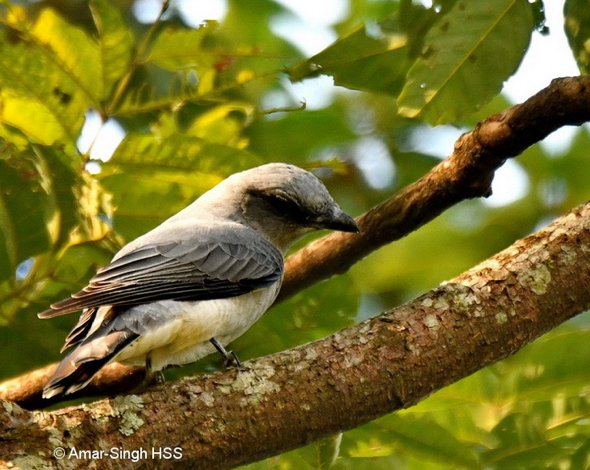“The Large Cuckooshrike (Coracina macei) was seen easily and often in pairs. Handbook of the Birds of the World 2017 separates it as Coracina javensis from the Indian Cuckooshrike (Coracina macei).

“In all our views and images of males we did not see any barring of the breast that Grimmett, Inskipp, et al 2016 suggest are present in the upper breast. Kazmierczak 2000 in the illustration and text of the C. m. nipalensis (that should be the Nepali subspecies) suggests no bars in the male. This is borne out by some of the images of C. m. nipalensis on Oriental Bird Images database.

“The above image is a female in flight, while the image below is a male from a different site with no upper breast bars.

The second image from above and that below are of the same bird, a young bird accompanying the male and has a few bars. I suspect a immature male rather than a female.

“Appreciate opinions.”
Dato’ Dr Amar-Singh HSS
Ipoh, Perak, Malaysia
11th November 2017
Location: Sarangkot, Gandaki Zone, Western Region, Nepal, 1550m ASL
Habitat: Village with fields & secondary growth








